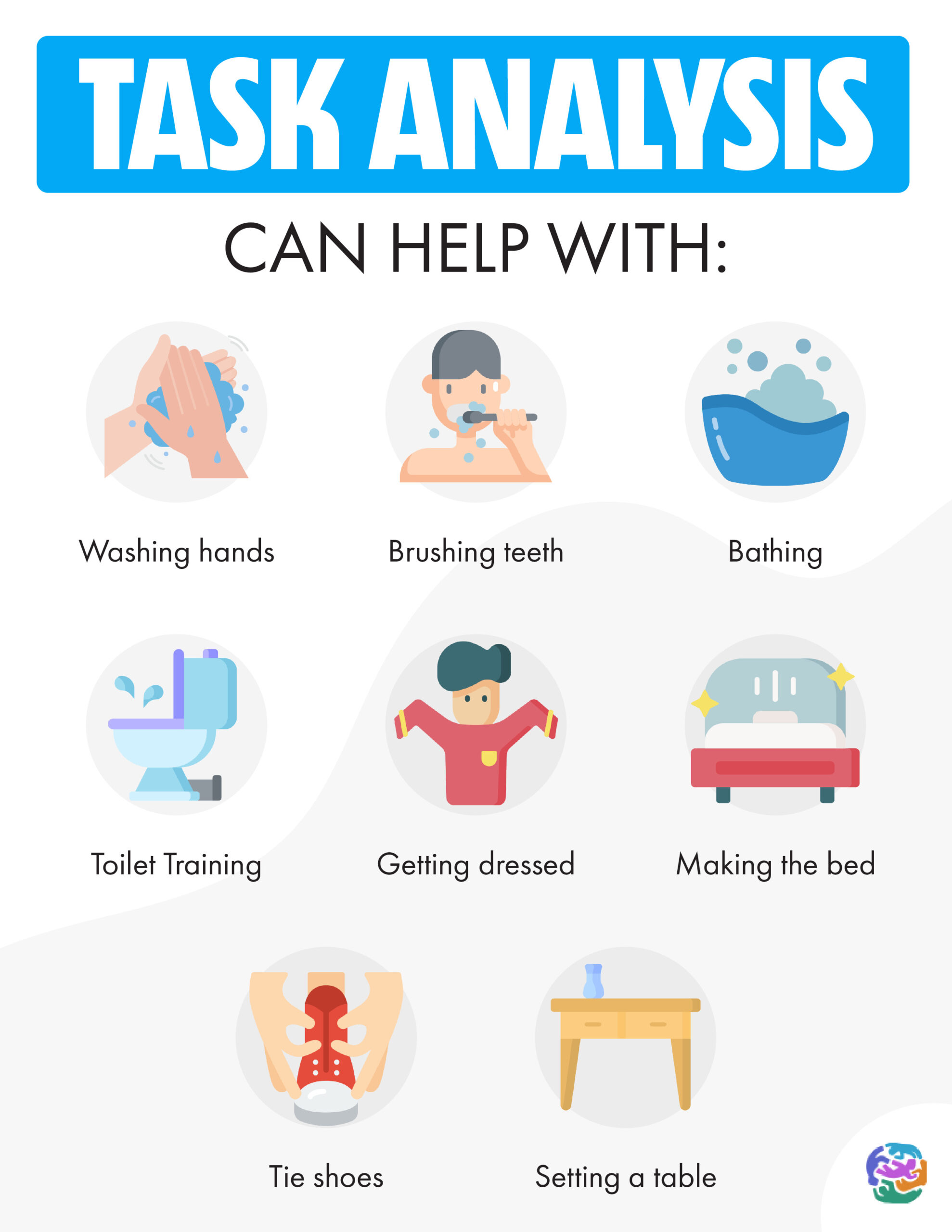Task Analysis in ABA Therapy

Welcome to our ABA therapy technique series where we explore the different techniques used by ABA therapists. In this article we will learn about Task Analysis.
Task analysis is an ABA technique where a therapist breaks complex tasks into easily manageable units. In this article we are going to examine what task analysis is, how it works, and how it is used in a clinical setting.
What Is Task Analysis
Task analysis is an essential technique used in ABA therapy. It consists in dividing activities into a series of easy steps. This way the activity will become less overwhelming and easier to learn for your child with autism.
The number of steps in a task will depend on the difficulty of the activity, as well as on your child’s age, level of functioning, and learning style.
How does it work?

An ABA therapist who uses task analysis will present a new activity as a logical progression of steps. For example, brushing teeth can be divided into the following tasks:
- Pick up the toothbrush
- Turn on the water tap
- Rinse the toothbrush
- Pick up the toothpaste tube
- Place a dab of toothpaste on the toothbrush
- Scrub the teeth gently
- Spit the toothpaste into the sink
- Rinse the toothbrush
- Place the toothbrush into the holder
- Fill a cup with water
- Rinse the mouth
- Spit the water into the sink
- Turn off the water tap
Your therapist will observe your child complete the target skill to get a clear idea of what level of support is needed for each step and identify the parts that may require additional instruction.
How Task Analysis Helps Children with Autism
Task analysis can be used to help children diagnosed with autism spectrum disorder master a wide range of multi-step skills. One of the greatest advantages of using task analysis in ABA therapy is teaching activities of daily living (ADLs), such as:
- Washing hands
- Brushing teeth
- Grooming
- Bathing or showering
- Using the toilet
- Getting dressed
- Preparing a meal
- Making the bed
- Performing household chores
- Getting on public transport
- Using a computer or tablet
- Using the phone
- Playing a sport
- Money management
- Time management
These activities are essential for promoting independence and building self esteem in children with autism.
Other skills and behaviors that your child can learn through task analysis include:
- Communication and language skills
- Social skills
- Improving memory and attention
- Academic skills
Chaining and Task Analysis
When using task analysis, ABA therapists will break down the skills that the child needs to learn into smaller steps. These steps are linked via chaining, which means that the child is required to complete each step before starting the next one.
Task analysis consists of three different types of chaining:
- Forward chaining
- Backward chaining
- Total task chaining
Forward chaining
Forward chaining refers to teaching steps of a task in chronological order. A therapist provides reinforcement each time your child masters a step.
Forward chaining is generally used with children who learn quickly and can perform at least some parts of the task independently.
Backward chaining
Contrary to forward chaining, backward chaining skills are taught starting with the last step of the activity. The therapist will help your child with all the steps of the task except for the last one. Consequently, reinforcement is provided at the end of the sequence.
ABA therapists typically use the backward chaining technique when working with children on the spectrum who are less likely to follow the task sequence unprompted. This method is also effective for children who regularly attempt to insert other behaviors into the chain.
Total task chaining
In total task chaining, the therapist teaches the steps of a task together and breaks down any problematic steps into simpler units. Unlike in forward and backward chaining, the child will receive reinforcement only after having completed the entire chain sequence.
Total task chaining is beneficial for children with autism who have the capacity to learn complex activities easily and who don’t need to do multiple attempts before they succeed in a task. However, if your child starts making too many errors within total task chaining, the therapist will revert to one of the other two chaining techniques.